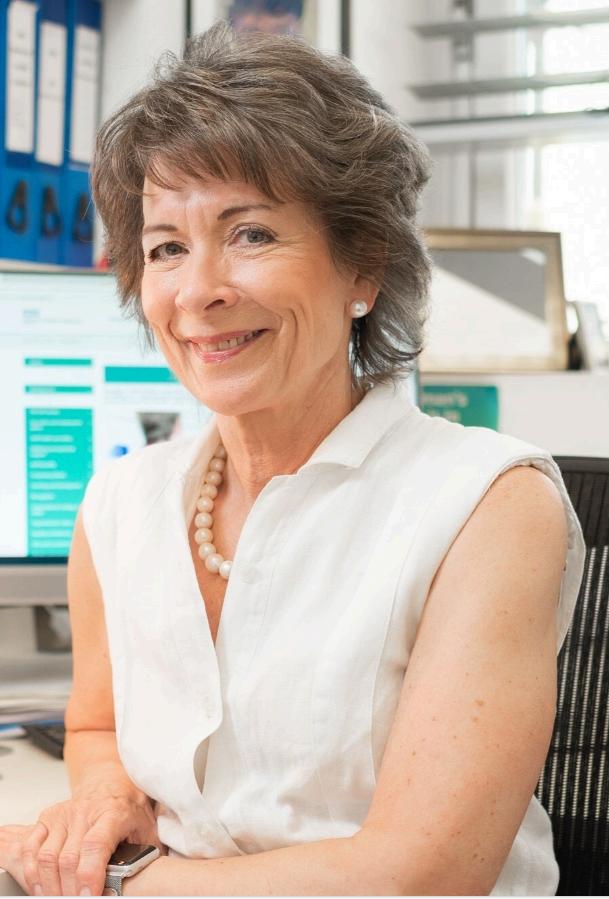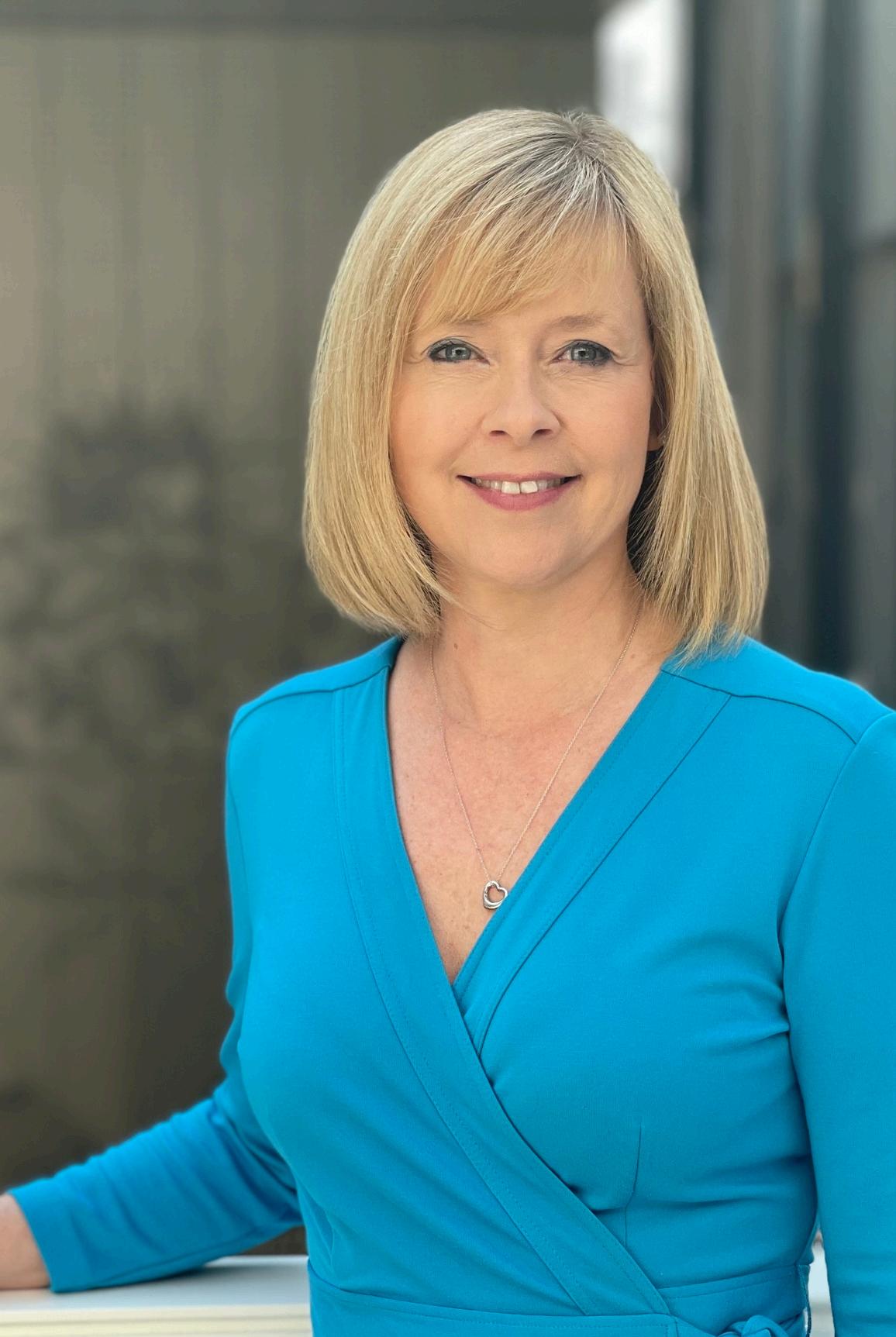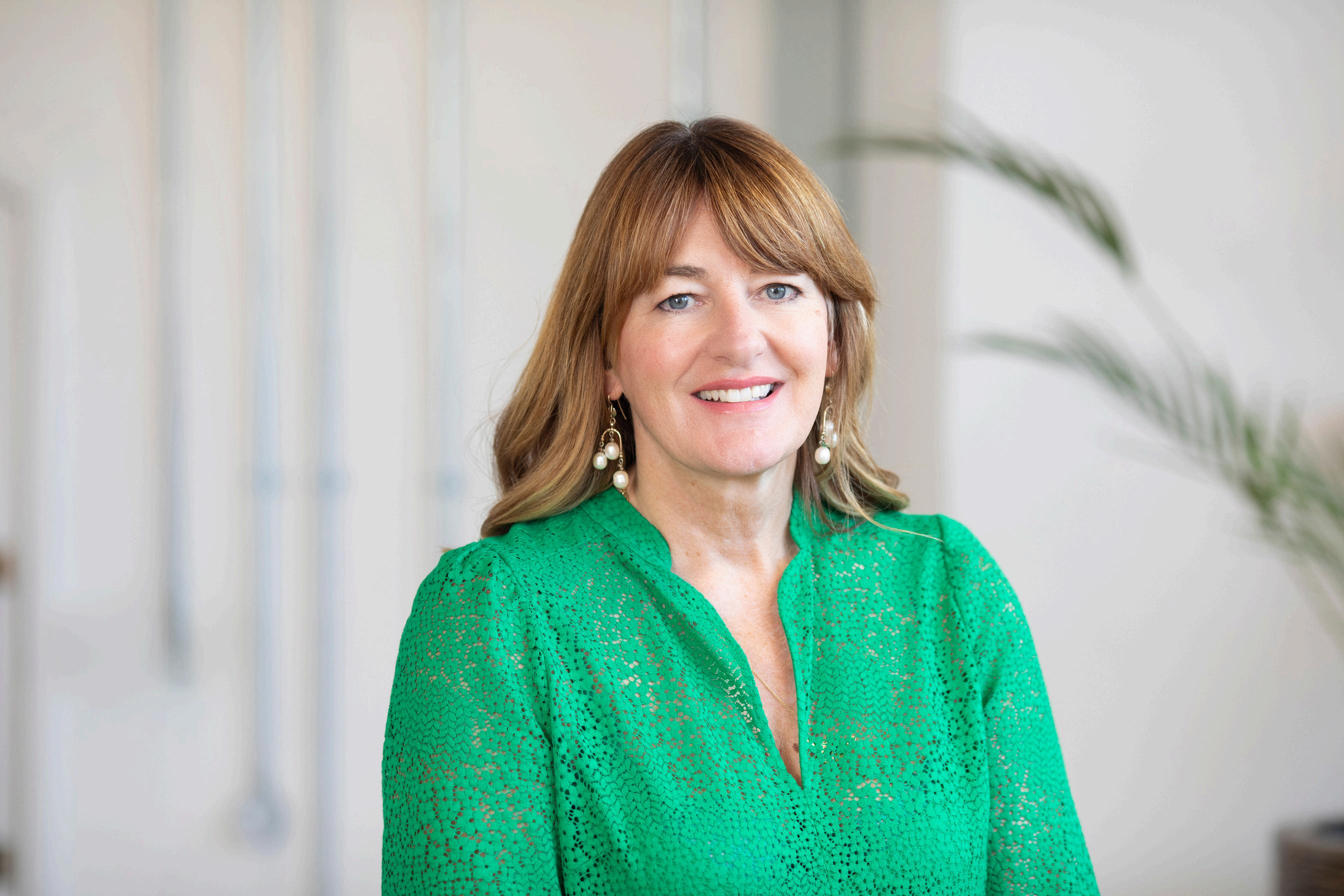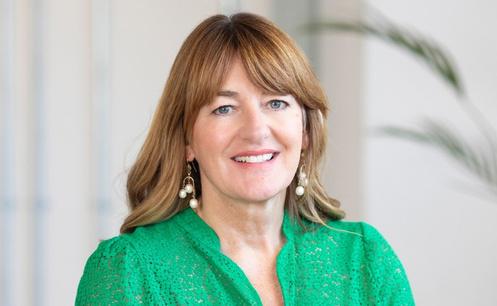

Exploremo FemHealthFoc Currentrealiti d futurehori






Page 1
Page 2
Page 3
Page 4
Page 6
Page 7
Page 10
Page 11
Page 14
Page 16
Page 17
Page 18
Introduction | Opportunities in women’s health
Progress on paper, gaps on the ground?
Beyond bikini medicine
Reflections on the NHS 10-year plan: A missed opportunity or a foundation for change?
Tech’s time to deliver?
Fragmentation stalling progress
System change needs joined-up thinking
Smashing taboos, raising literacy
Bridging gaps with choice and the private sector
We understand women’s health
Thank you to our contributors
Connect with us on LinkedIn
Page 19 References
Together,wecancreateafuturewherewomen’s healthisnolongeroverlooked,butchampioned asacornerstoneofafairer,healthiersociety.
Women make up 51% of the UK population, undertake 68% of all unpaid caring roles in society and are responsible for 80% of all household health decisions. Optimising their health is far from being a niche concern - it is a national imperative. Every girl and woman, at each stage of her life-course, deserves swift access to high-quality, compassionate, evidence-based healthcare.
Yet despite the many publications over the last decade, all highlighting the significant gender health gap experienced by women, this third FemHealth Focus report makes clear that women continue to face persistent and unacceptable disparities in outcomes, access and investment in their healthcare.
The recent commitment to reform our NHS by prioritising community-based care, digital innovation and a renewed focus on prevention, offers us a promising framework. We must seize this important opportunity and ensure that women s health is fully embedded across every level of our policy, commissioning and delivery landscape. That means listening to women, including all women, investing in research and clinical services that reflect women’s needs and lived experiences, and supporting the innovators who are driving change.
This report brings together voices from across the sector - clinicians, scientists, entrepreneurs, funders, policymakers, charities and advocates - who are united by a shared goal: to close the gender health gap and build a system that works for all women. I am proud to support this work and urge everyone reading this report to take its findings forward with purpose and urgency.
DameLesleyReganDBE
Women’sHealthAmbassador,DepartmentofHealthandSocialCare

Opportunitiesinwomen’shealth
For businesses focused on the health of women in the UK, the NHS remains a critical partner – not just as the biggest funder of healthcare services, but as the gateway to one of the world’s largest patient populations. Despite mounting pressure from rising waiting lists, budget constraints and yet another structural overhaul as NHS England (NHSE) is about to be merged into the Department of Health and Social Care (DHSC) and Integrated Care Boards (ICBs) are streamlined, the NHS continues to be a key route to market for UK health innovators. Its universal access and rich datasets make it a powerful platform for research, innovation and delivery.
Whilst the strained fiscal environment shifts national priorities towards tackling waiting lists and improving outcomes for major killers such as cancer and cardiovascular disease, there is growing concern that progress to address longstanding gender health inequalities remains slow.
At a roundtable event in April 2025, we brought together senior leaders and innovators from across the sector to assess the state of women’s healthcare in the NHS today and to explore the increasingly important role of corporates and insurers in scaling innovation to improve access to healthcare and outcomes for women who make up 51% of the population.

Progressonpaper,gapsontheground?
The evidence documenting the health inequalities women face across their lifespan is extensive; and so too is the growing case that greater investment in women’s health can deliver not just better outcomes, but major social and economic benefits. According to research from the NHS Confederation, gynaecological-related absenteeism alone costs the UK £11bn a year, while menopause-related workforce exits cost UK Plc £1.5bn.
The NHS’s ten-year Women’s Health Strategy, launched in 2022, set out a six-point plan to address the gaps by amplifying women’s voices in health policy and improving access to services. However, the UK continues to have the widest gender health inequalities in the G20, and gynaecology waiting lists have more than doubled since February 2020, with little sign of improvement.
Women’s health hubs are central to the strategy, but recent research by the Menstrual Health Coalition found that only 14 of the 42 Integrated Care Boards (ICBs) had one that provided all eight core services...
While progress has been slower than hoped, our panellists felt there is cause for optimism. Despite falling short of NHSE’s target for every ICB to have a fully functional women’s health hub by the end of 2024, the government’s three strategic shifts for the NHS - from hospital to community, analogue to digital, and treatment to prevention - were seen by panellists as a positive framework for improving women’s health services.
“Prettymucheverythingthatyouwanttodoinwomen's healthfitsnicelywithinthosethreeshifts,”saidone participant.
Panellists agreed that if the government maintains its commitment to these pillars, women’s health is likely to remain a priority in health policy. However, they warned that given the scale of the crisis facing the NHS, innovators will need to work harder and smarter to forge effective partnerships.
“Thoseinnovationsthatoffersignificantcontributionsto thebigchallengesfacedbytheNHSaremorelikelytobe successful,andthereareonlytwogamesintownatthe moment–productivityandfinance,”saidoneparticipant.
Beyondbikinimedicine
The panel agreed that fragmented NHS commissioning structures, siloed services, and the way women’s health is conceptualised are obstacles to the more joinedup approach that could help deliver improved outcomes. And the consensus among panellists was clear: women’s health must be reframed not as a subset of reproductive care, but as the broader “health of women.”
A significant number of health conditions are known to affect women more than men, from migraine to autoimmune disease. Embedded health inequalities also mean women frequently experience worse outcomes. Research from University College London in 2016 found that men with dementia received better medical treatment than women, while a 2018 University of Leeds study estimated that over 8,000 women had died over a decade due to disparities in heart attack care.
According to Closing the Women’s Health Gap, published by McKinsey in 2024, women spend an average of nine years in poor health - 25% more time than men. Addressing this disparity could boost the global economy by £1 trillion by 2034.
Just 20% of an individual’s health outcomes are directly linked to access to highquality healthcare. Adopting a population health approach that addresses the broader determinants of health such as housing, education, employment and environment, could help shift the dial towards prevention and support more integrated and sustainable services.
“There’salotofmisunderstandingaboutwhatthehealth ofwomenreallyis,”saidoneparticipantwithaninterest inprevention.“We’vegottobethinkingaboutitina holisticway,butintheNHSinparticular,medicineistoo siloedandthisispartoftheproblem.”
ReflectionsontheNHS10-yearplan: Amissedopportunityorafoundationforchange?
TheNHS10-yearplan,publishedon3July2025,setsoutambitionsfortheNHS overthenext10years.TheGovernment’svisionofreshapinghealthandcare servicesthroughthreeshiftsisacceptedastherightone–shiftingcareto community,shiftinganaloguetodigitalandshiftingtreatmenttoprevention. However,whenviewedthroughthelensofwomen’shealth,itdoesfallshorton commitment.
Theplandoesacceptthata“onesizefitsall”approachmissesthe“distinctneeds ofwomen”butfailstoembedthemmeaningfullyintoitscore.However,it commitstowomen’shealth“neveragainbeingignored”–aboldstatement,anda positiveone.
TheRoyalCollegeofObstetricians(RCOG)hascalledfortheWomen’sHealth StrategyforEnglandtobe“re-setquicklytoworkalongsidethe10-yearplanin drivingimprovementsinwomen’shealthaccess,experiencesandoutcomes, particularlyforminorityethnicwomenandthoseinthemostsociallydeprived areas”.
Promisinginitiatives
Therearepositivedevelopments:communitypharmacistswillsoonoffer emergencycontraceptionandmissedHPVvaccines.Reformsincervicalscreening andmaternitycare,includinganewoutcomessystemandnationaltaskforce,aim toimproveresults.Theplanleansonneighbourhoodhealthcentrestoactlike women’shealthhubs,thoughdetailsremainunclear.



“Women’shealthisnotniche—it’saglobalimperative. Fromdigitalinnovationtopolicyreform,wemustchallenge systemicunderinvestmentandhealthinequality,amplify women’svoices,andprioritiseprevention.Healthierwomen strengthensocietiesandeconomiesthrive.WhiletheNHS 10-yearhealthplansetsapromisingcoursewithitsfocus onmaternitycare,thelackoffirmcommitmentson women’shealthhubsandclosingthegenderhealthgap representsamissedopportunitytodeliverbettercarefor 51%ofthepopulation.”
KateLancaster
ChiefExecutive,RoyalCollegeofObstetricians andGynaecologists(RCOG)

Tech’stimetodeliver?
“AstheNHSreformsinlinewiththepolicydirectionset bythethreeshifts,thereisamaterialrolefordigital innovators,andnow'sthetimethateverybodyneedsto stepup,”oneparticipantcommented.
While concerns have been raised that the abolition of NHSE could delay or derail digital funding and IT programmes within the NHS, Health and Social Care Secretary Wes Streeting has said the changes present new opportunities to build stronger partnerships with the life sciences and MedTech sectors.
“We'regreatatgeneratingevidence,butittakesalong timeandfromaninnovationperspective,[startups]scale uptoacertainpointandthenthey'resoldofftoUS companies.AndactuallywhatweneedisGovernment backedsustainablefunding,socompaniescanreally grow,”theroundtableheard.
Participants agreed that while digital technologies and AI are no panacea, they have a central role to play in boosting NHS efficiency. Women’s health hubs were seen as a key area where digital transformation could be utilised to reduce unnecessary appointments, standardise care, and prevent A&E attendances.
“Technologyenabledhubsprovideareallyimportantrole indeliveringagainsttheefficiencyagenda,”saidone panellist,adding“thereisamajoropportunityfortech innovatorstosupportthisagenda.”
The global female healthtech market is growing at an annual rate of 16% but to date, the primary focus has been on menstrual health and maternity care.
“Whenyoulookatthewholegambitofwomen’shealth issuestherearehugepartsofthelandscapethatare completelyundeveloped,”saidonepanellist.

Fragmentationstallingprogress
The need for a more joined-up approach to women’s health and commissioning of services was a recurring theme throughout the roundtable discussion. And fragmentation - not just within the NHS, but across government departments - was identified as the single biggest barrier to scale.
“Weneedtohaveonenationaltechnologystrategy, andweneedtodothisatanationallevel,”saidone panellist.
Another likened the NHS to a school of fish.

“Youthinkofitasamassivewhaleinthesea,but whenyougetreallyclose,it'sactuallyloadsoffish, allswimmingindifferentdirectionswithdifferentIT systems,differentrules,guidelinesandseparate budgets.”
This analogy resonated with participants. One panellist, reflecting on their experience of partnering with the NHS, said it had taken “blood, sweat and tears” to secure a deal with a single Trust. The challenge, they stressed, was not a lack of willingness, but the weight of bureaucracy and segregated budgets.

“Theagreementandthepartnershipwerequickand easy,”theysaid,butworkingthroughthefinerdetailson equipmentandprotocolshadtaken“ahugeamountof timeandeffort.”
Others expressed concern that the proliferation of innovation programmes were adding to the sense of fragmentation.
“Itfeelslikeeveryweekthere'sanotherinnovation programmethatisdestinednevertoscale,”onepanellist said.
However, most agreed that the NHS is crucial to growth for women’s health innovators.
“IstheanswerintheNHS?Yes,becausewewantto remainintheUKandtodothatweneedtobeableto supporttheNHS,”oneparticipanttoldtheroundtable.
models.
“Iworkwithalotoffemalefounderswhoarelookingto entertheNHS,”saidonepanellist.“Andmyadvicetothem wouldbefindothermarketsanddeveloptheNHSin parallel.”
The roundtable also heard that while the NHS may not provide the ideal breeding ground for early-stage growth, its access to a large, diverse patient population and workforce means it still represents the ideal setting for piloting innovations.

“Fromahealthequitypointofview,Idon'tknowwhere you'regoingtogetthatkindofaccesstodataanywhere elseintheworld,”saidonepanellist.

Yet some said they would urge founders to consider hybrid business
“Despitepersistentanddeeplyconcerningdisparitie women’shealthcareacrosstheUK-suchasprolonge times,risingmaternalmortalityrates,andstarkineq thelandscapeisbeginningtoshiftinamorehopeful
Recentinitiativessignalagrowingcommitmenttosy reform.TheNHS10-yearplanpromisestoprioritisew healththroughcommunity-basedcare,digitalinnova arenewedfocusonprevention,andthereisagrowin forconsumerdrivenproducts.TheUKhasarealoppo totransformwomen’shealthcareintoamodeloffair accessibility,andexcellenceandwe’reprivilegedtos femhealthbusinessesintheirquesttoachievethis transformation.”
GayleCurry Partner,HealthcareandHealthtech

Systemchangeneedsjoined-upthinking
Women’s health hubs were intended to tackle fragmentation by bringing together services such as primary care, diagnostics and specialist consultations under one roof. However, while proving their value in terms of prevention, access and cost savings, several participants felt the current model remains too narrow in focus.
Some panellists also thought that clinicians too often lack professional curiosity around the health of women, while a persistent lack of gender-specific data and research continues to hamper progress.
The shortage of menopause data, for instance, means many women face difficulty in accessing hormone treatments, especially testosterone, via the NHS, despite well-documented benefits.
“We'vegottowakeuptothefactthatthelasttenyears ofawoman'slifeisinpoorhealthandtobethinkinghow wecankeeppeoplehealthy,”saidoneparticipant.
Systemic problems, panellists said, are compounded by siloed budgets. Contraception, for example, falls under public health, yet evidence shows that every £1 spent on contraception saves £9 for the NHS.
“Weneedjoinedupthinking,”saidoneparticipant. “Whetherthat'sjoinedupacrosstheNHS,joinedup acrossgovernmentorjoinedupacrosslifestages.There needstobemorejoiningupandmorecollaboration.”

Smashingtaboos,raisingliteracy
Recent years have highlighted the health inequalities women face across their lifespan. There remains a stigma attached to women’s health, that not only impacts investment opportunities but also leads to a deprioritisation in health budgets and services, and in education. Whilst it’s a sad reality, documenting and proving the gender health gap is a positive step towards closing the gap.
According to panellists, this lack of health literacy and education can be a huge barrier for founders and innovators attempting to grow businesses in the women’s health sector.
It’s been shown that greater investment in the health of women can deliver not just better outcomes, but major social and economic benefits. Businesses and organisations focused on the health of women are at the cutting edge of healthcare innovation, transforming women’s health and wellness in a bid to close the gender health gap. We’re delighted to support many businesses and NHS organisations who are leading the charge in levelling up the playing field for the health of women.
One participant, sharing their experience of meeting with investors, told the roundtable:
“Many times, we walk into a roo and they have got zero clue wh because they've never seen a p they've never spoken to their w
Another recounted having to adjust their language during a lunch with investors after witnessing them recoil at the term “heavy menstrual bleeding.”
Describing the broader challenge of pitching women’s health innovations to investors, they said:
“Trying
to do that without mentioning anatomy and without mentioning bodily functions actually turns out to be quite hard…But it speaks strongly to the societal stigma around women's health.”


Research conducted by CensHERship, a campaign group working to end online censorship of women’s health content, found that many businesses in the sector had not only faced barriers on social media and e-commerce platforms but had been refused bank accounts or were subjected to higher fees by banks and insurance providers.
Yet it is not only in investment and commercial circles where taboos are impeding progress. Panellists said improving education and health literacy was essentialnot only for girls and women, but also for the professionals who support them.
“You'vegotpersonaltrainerswhosecoreclientsare50year-oldwomenandwhohaveneverbeentaughtabout menopause.You'vegotPEteacherswhohaven'tgotlived experienceorexposure,”saidonepanellist.
“Weknowthatmovingourbodiesisoneofthebest medicationsforlifelivedingoodhealth,andyetweare deprivingwomenofthatlifelongrelationshipwith physicalactivitybecausethey'redroppingoutbecauseof embarrassmentaroundpubertyandmenstruation, becauseofhavingababy,becauseofnotknowinghowto returnpostnatally,becauseofmenopause.”

“Reportsoverrecentyearshavehighlightedthede andunacceptablehealthinequalitieswomenface theirlifespan.Thereremainsastigmaattachedto health,thatnotonlyimpactsinvestmentopportun alsoleadstoade-prioritisationinhealthbudgetsa servicesandvoidintermsofeducation.
Whilstit’sdishearteningtolearnofthereality;doc andprovingthegenderhealthgapcanbeseenas steptowardsclosingthegap.Withprovenevidenc power.It’sbeenshownthatgreaterinvestmentin ofwomencandelivernotjustbetteroutcomes,bu socialandeconomicbenefits.Businessesandorga focusedonthehealthofwomenareatthecutting healthcareinnovation,transformingwomen’sheal wellnessinabidtodriveupequity.
We’redelightedtosupportmanybusinessesandN organisationswhoareleadingthechargeinlevelli playingfieldforthehealthofwomen.”
CharlotteLewis
CommercialHealthandTechnologyLawyer

Bridginggapswithchoiceandtheprivatesector
It has been clear throughout all the events in our Women’s Health series that founders and innovators in this space are often motivated as much by purpose as they are by profit. As a result, the principle of universal access makes the NHS an appealing customer from both an ethical as well as commercial perspective.
Outside the NHS, many companies in the women’s health sector operate on a B2C model. This has become an increasingly prominent route to market in recent years. However, for many panellists, including those with direct-to-consumer offerings, it also raises issues around access.
“What's happening is that women who can't afford to wait but can afford to pay have access to other options, but what about those women who can't afford to wait and can't afford to pay?” said one panellist.
Another participant, whose business began as a direct-to-consumer model, said they hoped to eventually partner with the NHS because they “fundamentally don’t believe women should pay for healthcare at the point of use.”
Others argued that a hybrid approach is essential to help scale the services required to fill gaps in NHS provision.
“ThereisaplacefortheNHS,thereisaplaceforprivate, there'saplaceforinnovation.Andwhatweneedtodois worktogethertobeabletoofferthat,”theroundtable heard.
This view was echoed by several panellists who saw potential for more crosssector collaboration to deliver joined-up and accessible services.
“We'reseeingmoreandmorethatwomenareshopping aroundandtakingapicnicapproachtotheirhealth, becausethesolutionisn'tallinoneplace,”saidone participant.
A potential solution to the question of “who pays?” is stronger engagement in women’s health from corporates and insurers. Some panellists reported growing interest in the corporate market, where employers are increasingly aware of the need to address women’s health as part of their recruitment and retention strategies.



“Currently, we're seeing some companies in fertility benefits, who will pay £20,000 or £4 their [staff members’] IVF treatments. And w realised doing the market research is that, a companies want to fill the gaps when it com insurance in terms of menopause care, chro conditions, and fertility.”
Even so, insurance remains a relatively underdeveloped market in this space. While some providers have introduced gender-specific health benefits, most still offer limited support for fertility or menopause-related care.
“I think it is really important to in companies,” said one panellist. “ childbirth are not under insuran We need this freedom of choice

One participant said they were working with three major providers to explore how women’s healthcare could be integrated into “an insurance model that works for employers.”
“That's obviously going to take so little bit of an appetite but we are still quite a way away,” they said.



Weunderstandwomen’shealth
The importance of healthcare that addresses women’s health is, thankfully, becoming an increasing priority, with technology playing a pivotal role in addressing women’s health and the gender health gap.
There's complexity with a highly regulated landscape, the even greater need to protect privacy and difficulties accessing funding.
It's still a surprise to learn that women weren't required to be included in clinical trials until 1993. Since then, we've seen an increase in female clinical trial participants, but results are still not necessarily analysed by sex and/or gender – we're here to support those efforts in closing the gap.
With extensive experience across the technology, health and care, and life sciences sectors, we can provide a “one-stop” legal service for innovators, investors and providers.

Sophie Burton-Jones Partner
Mills & Reeve
Nicola Fay
Sales Director
We Are Riley Limited
Stephane Caird Partner
Mills & Reeve
Dr Rebecca Lewis
Co-founder
Newson Health Limited
Paul Holmes Market Access and Government Affairs Director Hologic Limited
Katherine Church
Commercial Advisor 28X
Dr Nikita Kanani MBE
Chief Strategy and Innovation Officer Aneira Health
Jill Mason Partner, Head of Health and Care Mills & Reeve
Tania Richards
Senior Policy Advisor
Mills & Reeve
Dr Michelle Tempest
Senior Partner
Candesic Limited
Dr Emma Ross Co-founder and Chief Scientific Officer The Well HQ
Devika Wood
Chief Executive Officer Brain+ A/S
Dr Louise Newson
Founder and Clinician Newson Health Limited
Mia Church
Business Development Manager
Mills & Reeve
Dr Aamena Salar
GP
The Modality Partnership
Kate Lancaster
Chief Executive
Royal College of Obstetricians and Gynaecologists (RCOG)
Gayle Curry Partner, Healthcare and Healthtech Mills & Reeve
Charlotte Lewis
Commercial Health and Technology Lawyer
Mills & Reeve
Vivan Pinto
Managing Director Sunbird Capital
Rubina Raut
CEO and Co-founder WUKA Ltd
Dr Sujitha Selvarajah Co-founder
Hesta Health
Dr Stasa Stankovic
Co-founder and CEO Ovatrix Ltd
Ambra Zhang
Co-founder and CEO
Juniper Reproductive Health Ltd
Thankyoutoourcontributors




References
Women’s Health Market Size, Share & Trends Analysis Report By Application (Contraceptives, Menopause), By Drug Class (Hormonal Therapies, Pain And Symptom Management),
By Age (50 Years And Above), By Region, And Segment Forecasts, 2025 - 2030 | Grand View Research
Hansard, Women s Health (Volume 762: debated on Thursday 27 February 2025) | UK Parliament 2025
What Will It Take? Investigation into Menstrual Health Services Across the UK | Menstrual Health Coalition
Wes Streeting pledges to retain digital workforce amid NHS reforms | Digital Health Intelligence Limited
Women with dementia receive less medical attention | University College London
Estimated 8000 women die due to unequal heart attack care | University of Leeds 2025
RCOG and women’s health organisations joint statement on stigma and shame in women’s health services | Royal College of Obstetricians & Gynaecologists (RCOG)
Our research findings | CensHERship Ltd 2024
